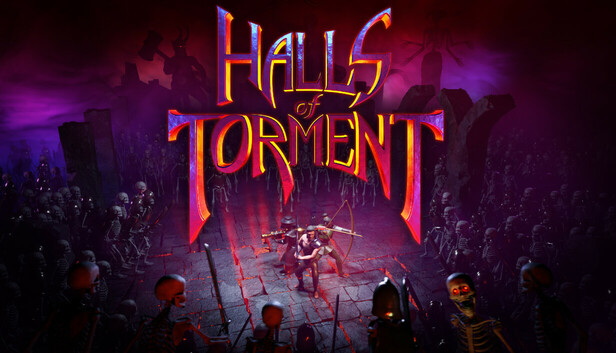
Halls of Torment condenses roguelite depth into razor‑fast, 30‑minute runs wrapped in a striking pre‑rendered aesthetic that channels late‑90s RPGs. The retro visuals lend each cavern, ruined hall, and grotesque boss a tactile, cinematic grit, while modern systems; massive pools of traits, modular abilities, and persistent meta progression; turn every descent into a new design puzzle. Runs feel like creative experiments: quick to start, brutal to master, and endlessly replayable for players who love iterating on builds, discovering strange synergies, and squeezing more power out of each trip into the abyss.
Core loop and feel
• Fast, razor‑focused runs: Each attempt centers on surviving escalating waves, harvesting key items, and forcing a showdown with a Lord before the pressure peaks. The 30‑minute cap pushes you toward bold, decisive choices and rapid iteration rather than slow grinding.
• Build discovery as gameplay: Traits, blessings, and items interlock to create emergent synergies; one choice can instantly transform your run from brittle glass cannon to crowd‑controlling juggernaut. Runs feel like deliberate experiments where adaptation and clever combos matter more than raw grind.
• Tactical environments, not just backdrops: Traps, collapsible floors, spiked pits, and level geometry are active tools: funnel enemies into hazards, bait bosses across damaging terrain, or chain knockbacks into trap triggers. Mastering the environment multiplies effectiveness and separates good runs from great ones.

Systems and progression
• Quest‑driven long‑term goals: An evolving web of quests and milestones unlocks new items, characters, and entire stages, turning each run into a step toward meaningful, persistent progression rather than a single isolated attempt.
• Deep blessings and trait pools: Dozens of blessings and a massive trait ecosystem let you scale power dynamically during a run while shaping long‑term character archetypes across attempts; choices compound, so early decisions echo through the rest of the descent.
• Retrieval economy and overworld upgrades: Unique artifacts and items you drag back from the depths become permanent tools in the overworld, enabling deliberate build planning and opening new strategic options for subsequent runs.
• Crafting, tinctures, and controlled randomness: Craftable tinctures and simple alchemy give you targeted control over RNG; use them to stack the odds for risky plays, shore up weak synergies, or pivot a struggling run into a focused power spike.
• Meaningful meta feedback loop: Progression systems reward experimentation; unlocks expand your toolbox, which in turn makes new strategies viable, encouraging players to test, fail, and refine with a clear sense of forward momentum.

Content breadth
• Deep roster and flexible builds: 11 playable characters with multiple marks, 74 abilities and upgrades, and a staggering pool of 1000+ traits across rarities let you craft wildly different archetypes; run‑to‑run you can pivot from glass‑cannon burst to utility‑heavy tanker or a tricksy crowd‑control specialist.
• Massive, high‑ceiling loot ecosystem: 60 base items plus 240 higher‑rarity variants, 30 artifacts, and layered item interactions create rich combinatorics for buildcraft; rare variants and synergetic pickups reward scavenging and experimentation.
• Varied bosses and encounter design: 35+ unique Lords and 70+ monster types populate stages with distinct mechanical identities, from relentless swarms that test area control to pattern‑driven boss fights that demand memorized reads and precise execution.
• Quest depth and long‑term goals: A vast quest catalog and late‑game content such as the Shrine of Torment provide meaningful endgame targets for completionists and speedrunners, turning short runs into a long arc of progression and mastery.
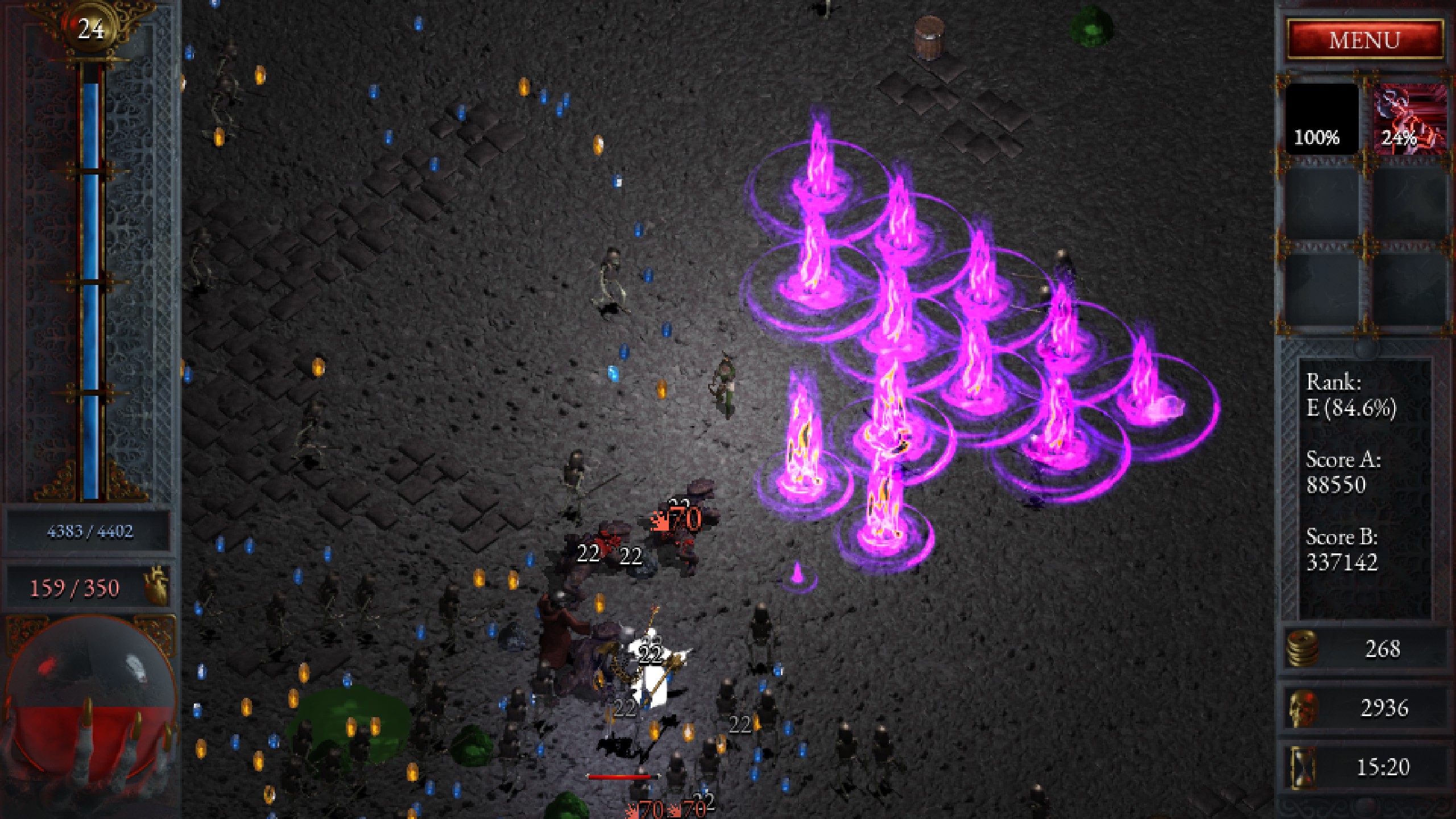
Where it shines
• Perfect bite‑sized sessions: The 30‑minute cap makes Halls of Torment ideal for quick play; you get decisive, satisfying runs that still advance meta progression and let you meaningfully test new builds.
• Combat that feels earned: Deep mechanical systems, reactive enemy patterns, and interactable environments turn randomness into a playground for skill; thoughtful positioning, trap usage, and timing consistently reward savvy players.
• A distinctive, readable aesthetic: The pre‑rendered late‑90s visuals lend mood and personality while also serving gameplay; clear silhouette language and cinematic lighting make telegraphed attacks, hazards, and item nodes pop even in chaos.
• Replayability baked in: With layered quests, enormous trait and item pools, and high‑rarity variants, runs rarely feel identical; every descent encourages adaptation, experimentation, and discovery.
• High skill ceiling, approachable entry: The systems reward mastery without punishing newcomers: short runs lower the cost of failure, while deep synergies and late‑game challenges provide long‑term goals for dedicated players.
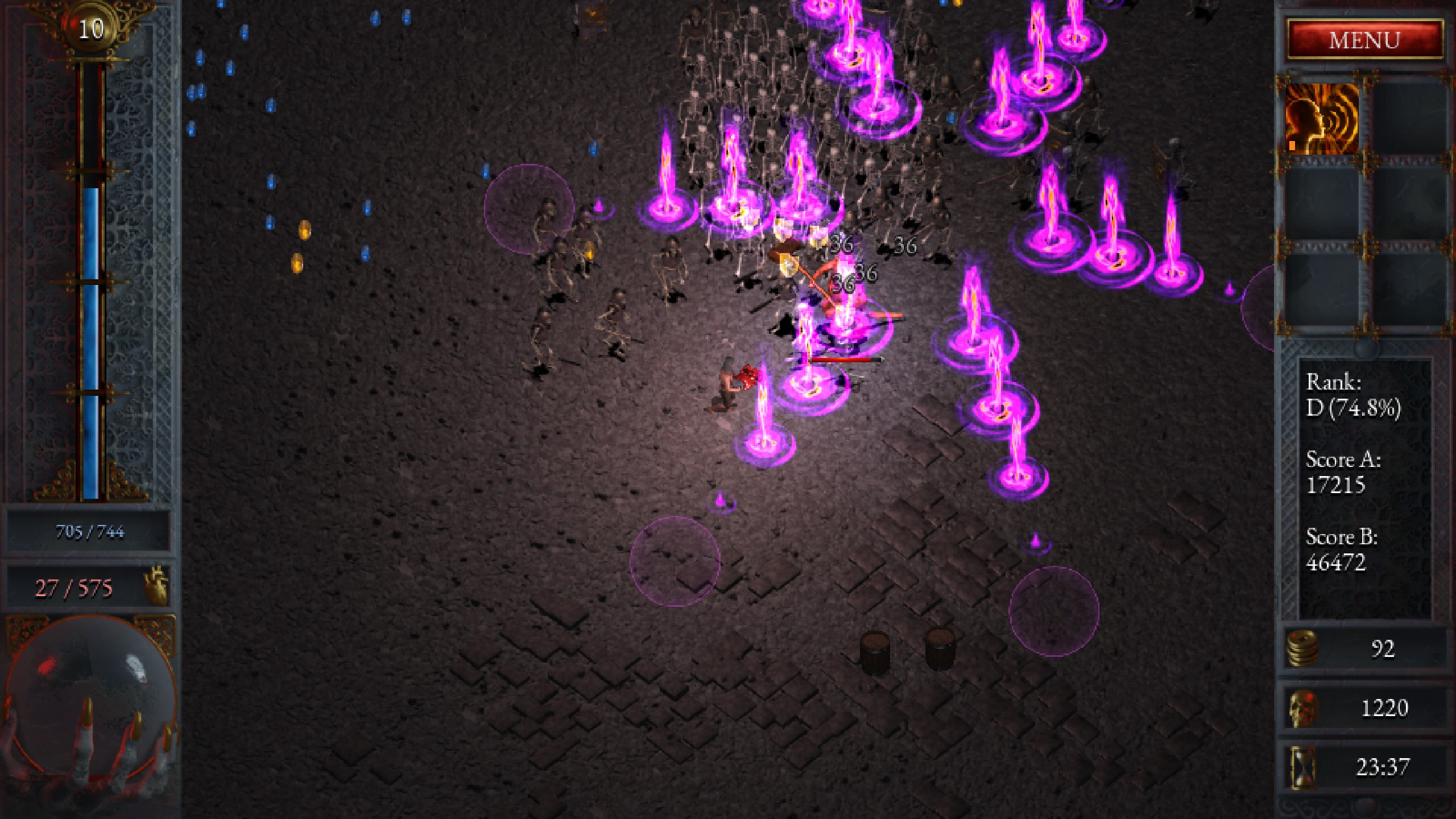
Weaknesses and cautions
• Early Access polish gaps: The game shows promise but still has rough edges: UI inconsistencies, balance outliers, and occasional bugs are present and will change as the developers iterate.
• Steep systemic complexity: With thousands of traits and dozens of layered mechanics, newcomers can feel swamped; meaningful progression often rewards players who track combos, document interactions, and commit to experimentation.
• Difficulty and pacing spikes: Sudden horde surges or boss mechanics can produce sharp difficulty cliffs that highlight mastery but risk alienating players seeking a steadier ramp; more gradual difficulty curves or optional tuning would help widen appeal.
• Onboarding shortfalls: The game favors discovery over handholding, which is rewarding for tinkerers but can leave some players confused about core synergies, item value, or strategic tincture use.
• Replay value tied to grind: Long‑term progression relies on repeated runs and quest completion; players who dislike repetitive loops or heavy RNG may find advancement slower than expected.
• Balance volatility: As new items, variants, and classes are added, certain builds can spike in power unexpectedly; this creates high replay highs but also periodic balance resets that can invalidate optimized strategies.
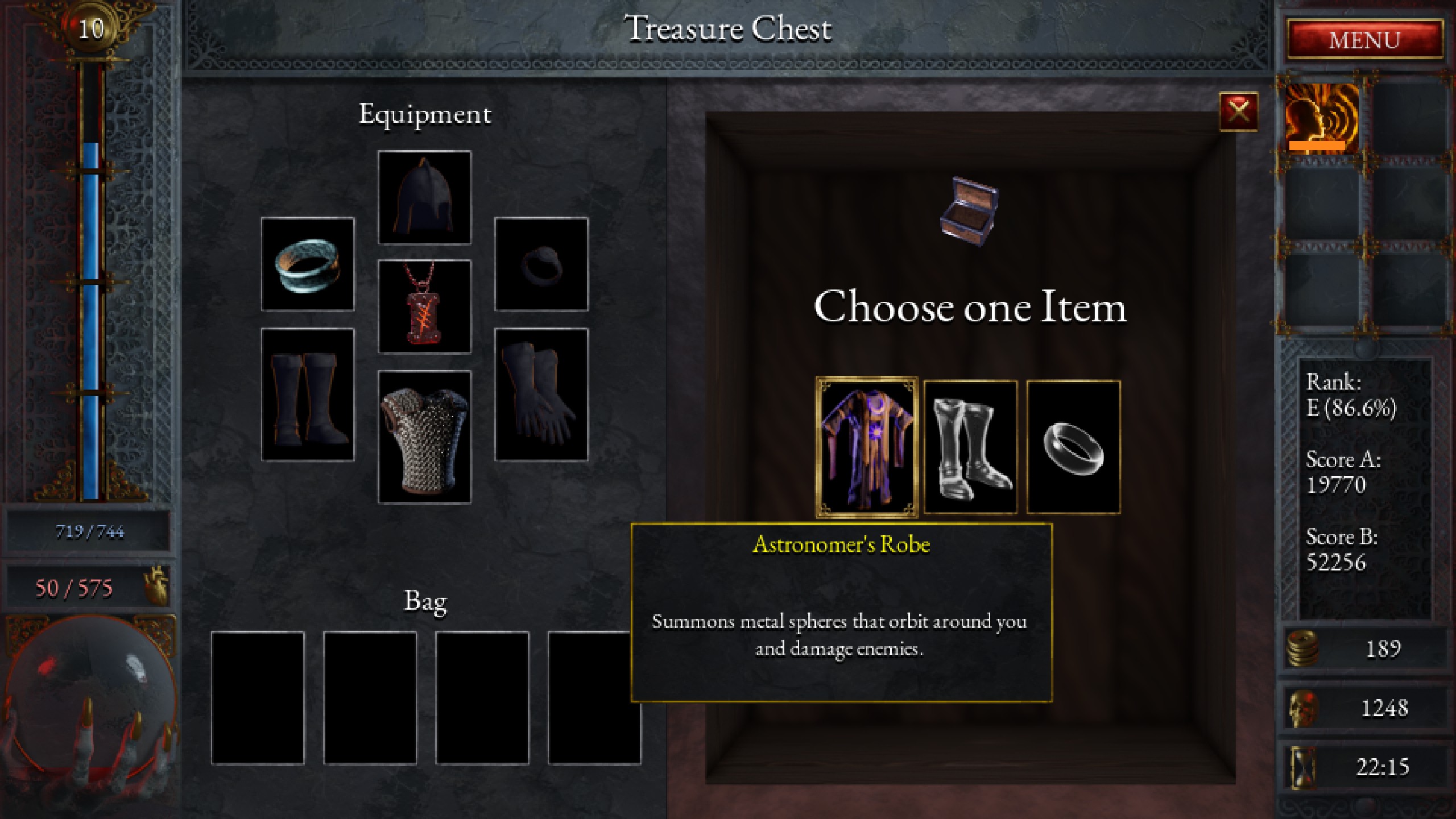
Tips for new players
• Experiment first, optimize later: Treat early runs as labs; try odd item and trait pairings to learn interactions; once you discover a reliable combo, refine stats and upgrades to squeeze more consistent value.
• Prioritize quest unlocks that compound progress: Focus initial quests on retrieval, inventory expansion, and overworld upgrades so items you recover translate into greater power on future attempts.
• Weaponize the environment: Look for choke points, trap lines, and breakable scenery you can trigger; positioning enemies into hazards or knockback chains turns level geometry into free damage and crowd control.
• Master one archetype before branching: Pick a single character and master its core rotation and cool‑down cadence; understanding that power curve makes it far easier to evaluate how new items change playstyle.
• Log discoveries for faster theorycrafting: Keep a short note of unusual synergies, tincture effects, and variant items you find; this makes future runs less trial‑and‑error and accelerates effective build creation.
• Use tinctures to tilt probability, not solve problems: Save crafting for runs where a specific outcome matters (boss fight, key artifact); tinctures increase odds but don’t replace solid positioning and timing.
• Practice risky shortcuts in private runs: Rehearse high‑variance routes and boss phases in quieter runs until you can execute them reliably under pressure.
• Balance safety and scoring in ranked attempts: In competitive or late‑game runs, favor consistency: a slightly slower, reproducible line beats a flashy shortcut that crashes half your attempts.
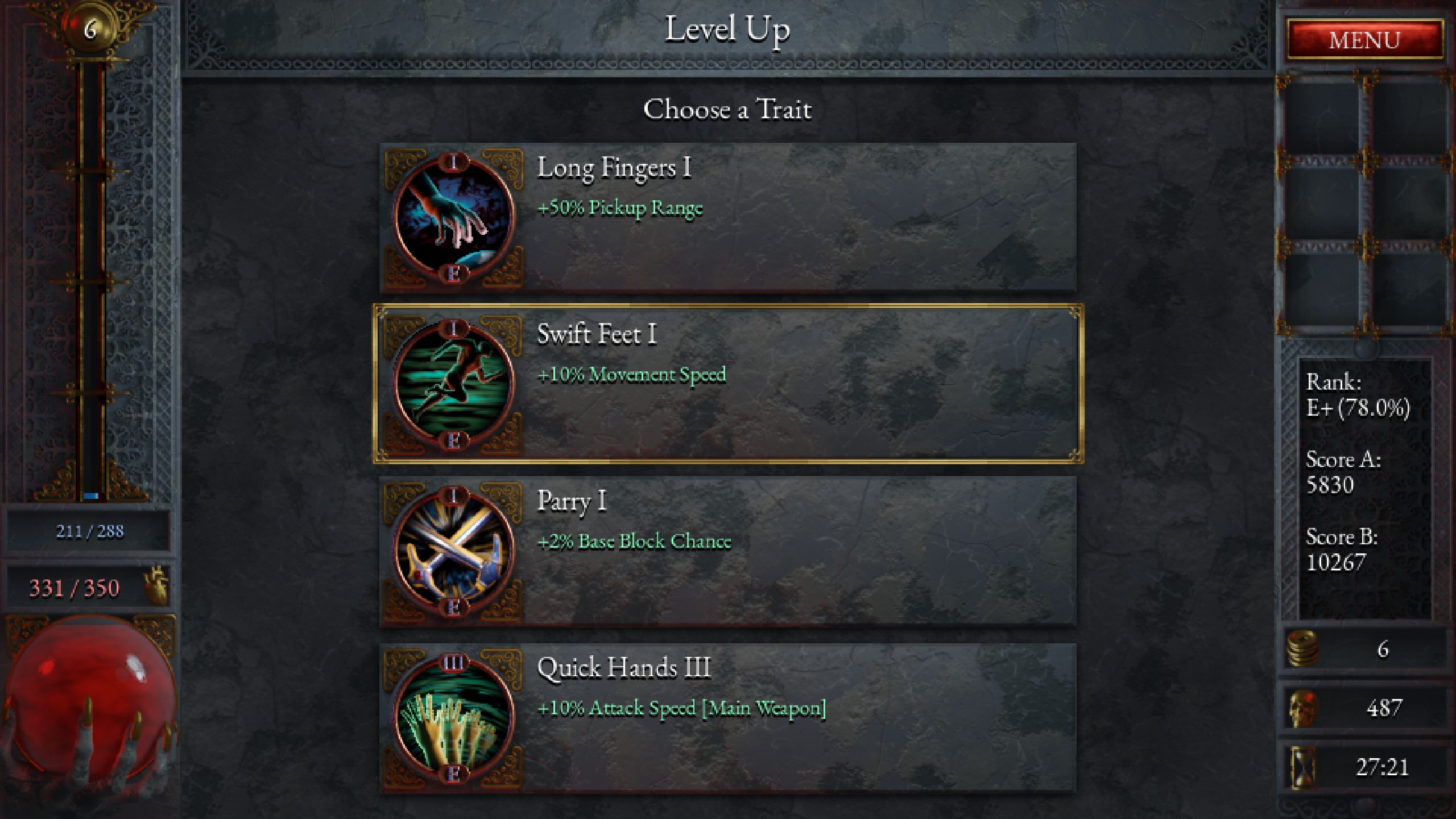
Final verdict
Halls of Torment is a standout roguelite for players who crave compact, tactical runs wrapped in a sharply realized retro veneer. Its enormous catalogue of abilities, traits, and item variants fuels near‑endless experimentation, every descent feels like a new design problem to solve, while quest progression and item retrieval lend persistent purpose to even failed attempts. Early Access means balance and polish will shift, but the core is solid: crisp, weighty combat; meaningful risk‑vs‑reward decisions; and a memorable pre‑rendered atmosphere that makes each cavern feel cinematic. If you enjoy discovery, iterative buildcraft, and short sessions with high stakes, Halls of Torment is a deep, satisfying pit to fall into.
Watch and Wishlist
• Wishlist Halls of Torment now: Add the game to your storefront wishlist to get notified about launch discounts, early access patches, and seasonal bundles.
• Follow the developer: Subscribe to Chasing Carrots on social channels and storefronts for patch notes, roadmap updates, and developer livestreams that often reveal balance changes and new content.
• Watch quickplay clips and boss fights: Seek short creator highlights and boss encounter clips to judge pacing, difficulty spikes, and whether a character’s kit appeals to you.
• Tune into Early Access streams: Developers and content creators often run live builds showing fresh balance updates, item reveals, and meta shifts; use streams to see how the game evolves in real time.
• Check community guides before committing: Look for beginner build guides and tincture/crafting overviews to speed up your learning curve and avoid early frustration.
• Join official channels: Hop into the game’s Discord or subreddit to find co‑op partners, private run groups, and announcement threads for events or milestone updates.
• Watch for demo windows and free play events: Keep an eye out for weekend demos or free-play events to test run length, feel, and class variety without buying.
• Track major updates and DLC: Enable notifications for roadmap milestones and content drops so you don’t miss new stages, characters, or significant rebalances that change long‑term value.
Key Takeaways
• Bite‑sized roguelite loops: Fast, roughly 30‑minute runs make the game ideal for short sessions that still feel meaningful.
• Retro visual identity: Pre‑rendered late‑90s style gives the halls strong atmosphere and readable telegraphs in the chaos.
• Massive experimentation space: Hundreds of traits, dozens of abilities, and numerous item variants enable wildly different builds each run.
• Quest‑driven progression: Meta quests, retrievals, and overworld upgrades turn repeated attempts into long‑term advancement.
• Tactical environments: Interactable traps, hazards, and level geometry can be used offensively to control hordes and shape encounters.
• High content ceiling: Deep roster, large item pool, many bosses and quests provide long‑term goals and late‑game challenges.
• Early Access caveats: Polishing and balance are ongoing; expect changes and occasional rough edges as systems evolve.
• Great for experimenters and busy players: Best enjoyed by those who like iterative buildcraft, discovery, and compact, high‑stakes runs.
Game Information:
Developer & Publisher: Chasing Carrots
Platforms: Xbox Series X (reviewed), PlayStation 5, PC - Steam
Release Date: September 24, 2024
Score: 8.0 / 10
Halls of Torment earns an 8.0 for delivering a tight, highly replayable roguelite that blends nostalgic presentation with modern systems. It nails run tempo, emergent buildcraft, and environmental tactics, creating a satisfying loop for players who enjoy experimentation in short sessions.